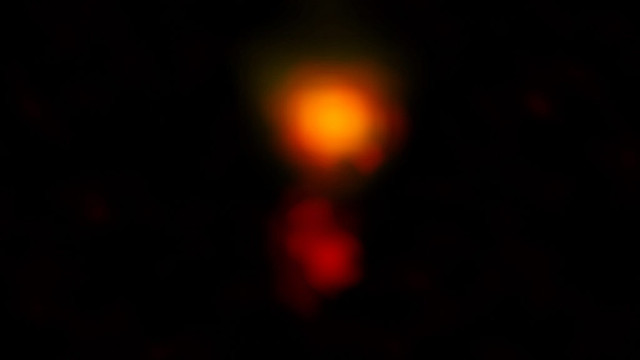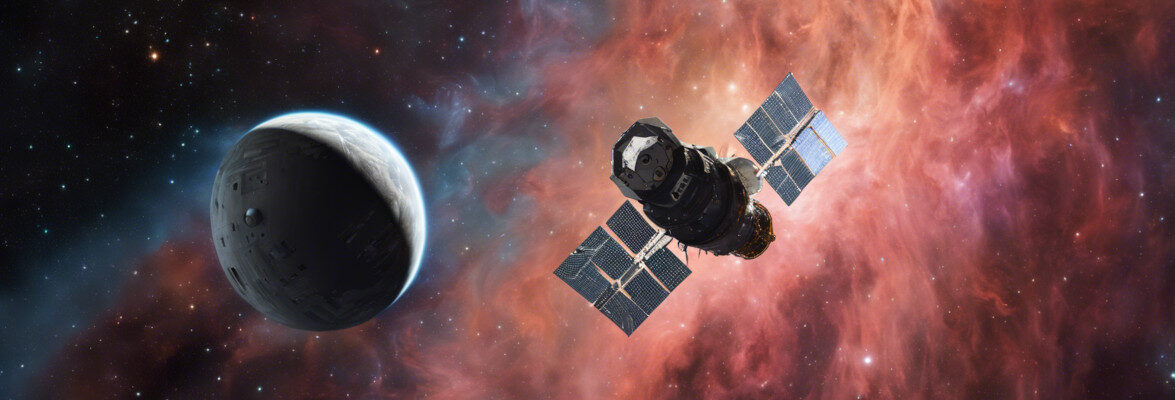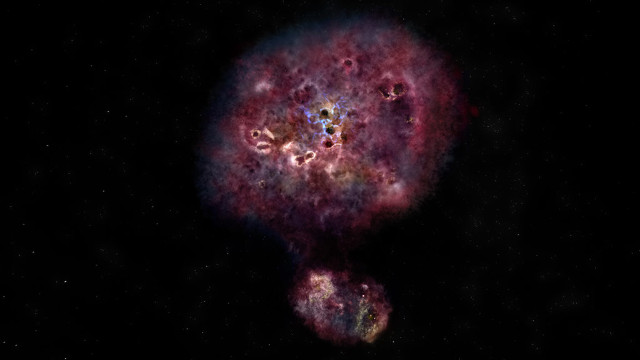
An article published in “The Astrophysical Journal” reports a study on a dusty early galaxy known as MAMBO-9. A team of researchers led by Caitlin Casey of the University of Texas at Austin used the ALMA radio telescope to study this galaxy about 13 billion light years away and its star formation rate much higher than the Milky Way’s. The observations showed that actually they’re two galaxies during a merger. That’s all useful to understand the role of dusty galaxies like that one in the evolution of the universe.
The MAMBO-9 galaxy is also known as MMJ100026.36+021527.9 and was discovered in the last decade by Manuel Aravena, one of the authors of this research, using the MAMBO (Max-Planck Millimeter BOlometer) instrument installed on the 30-meter IRAM telescope in Spain and the PdBI (Plateau de Bure Interferometer) in France. Its faint emissions weren’t detected by other observatories, with the result that the discoverers had doubts about its existence. The ALMA radio telescope (Atacama Large Millimeter/submillimeter Array), inaugurated in March 2013, has the power and sensitivity to make observations of very distant galaxies and was used for a survey of dusty galaxies in the early universe.
In several cases, early galaxies were examined using gravitational lensing effects, with their image magnified by the distortion caused by the gravity of a galaxy between them and the Earth. This makes it easier to locate them but makes it more difficult to study their details because of the image distortion, due to the fact that the magnification is never uniform throughout the galaxy. The galaxy MAMBO-9 is the most distant dusty early galaxy with remarkable star formation observed so far without the help of a gravitational lens. This allowed to gather a lot of data on it to define its characteristics: it’s actually two galaxies that are merging even if there’s a big difference in their size and it could be said that the larger one is devouring the smaller one. The total mass is truly remarkable, estimated in more than ten times the Milky Way’s.
The top image (ALMA (ESO/NAOJ/NRAO), C.M. Casey et al.; NRAO/AUI/NSF, B. Saxton) shows the galaxy MAMBO-9 seen by the ALMA radio telescope. The bottom image (NRAO/AUI/NSF, B. Saxton) shows an artistic concept of what MAMBO-9 would look like in visible light.
One of the mysteries that many astronomers are investigating concerns the considerable presence of dust in galaxies like MAMBO-9. Dust is generally a by-product of dying stars, which eject their outer layers during the red giant phase and other materials in supernovae. Caitlin Casey explained that she and her colleagues expect to find a star mass in the galaxy a hundred times that of dust but MAMBO-9 hasn’t yet produced so many stars. The hope is to find more dusty galaxies in the early universe to try to understand how common they are, how such massive galaxies formed so early in the history of the universe, and why they’re so dusty.
Studying galaxies so distant that we see them from Earth as they were less than a billion years after the Big Bang isn’t easy, and that’s why MAMBO-9 is at the center of a targeted research several years after its discovery. There are many requests to use instruments like the radio telescope ALMA and that means that it can take a long time to get the observations needed for a study. Increasingly powerful and sophisticated instruments will be activated in the coming years to help astronomical research, including those on the role of dusty galaxies in the evolution of the universe.


